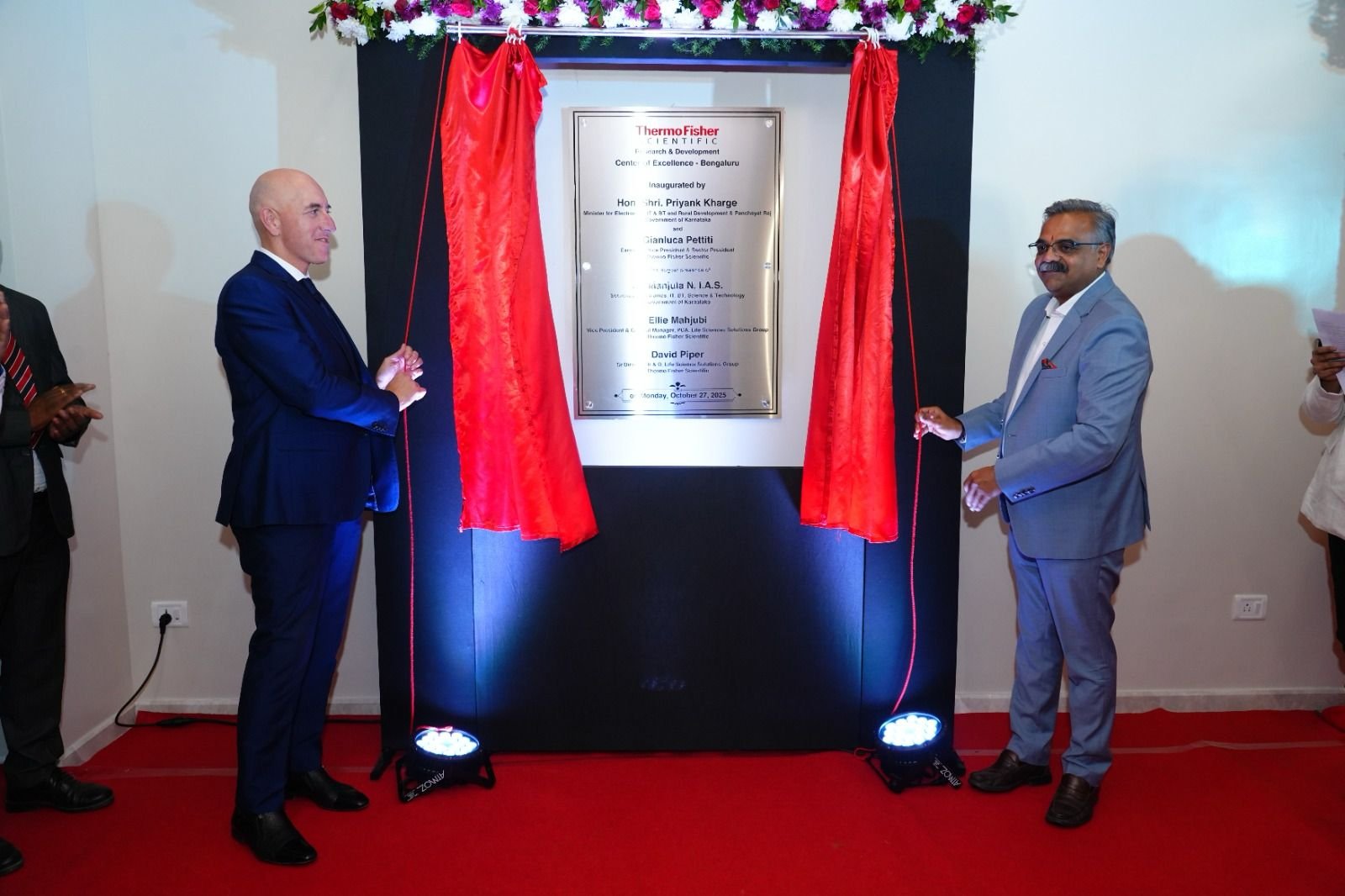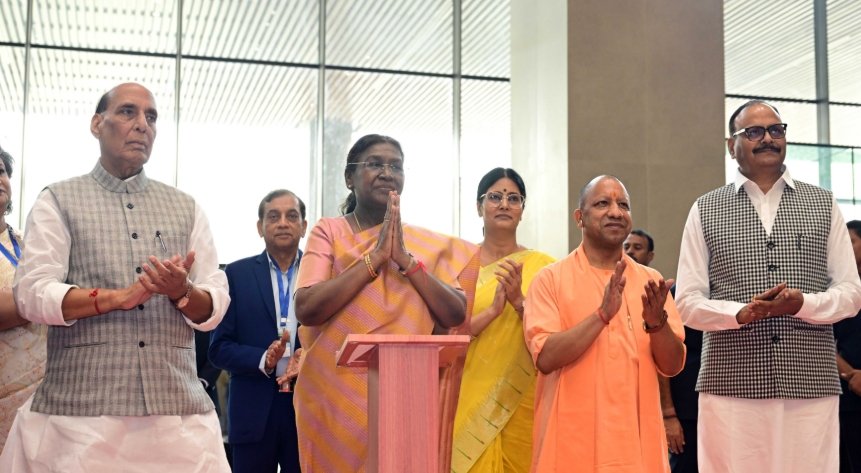Technoglobalism: The Indian Opportunity & Challenge
April 12, 2004 | Monday | News
Technoglobalism
Technoglobalism: The Indian Opportunity
& Challenge
 The
term "Techno-globalism" means a strong interaction between the
internationalisation of technology and the globalisation of the economy.
Technoglobalism has created a widening of cross-border interdependence between
individual technology based firms as well as economic sectors. Techno-globalism
provides both challenges and opportunities for India.
The
term "Techno-globalism" means a strong interaction between the
internationalisation of technology and the globalisation of the economy.
Technoglobalism has created a widening of cross-border interdependence between
individual technology based firms as well as economic sectors. Techno-globalism
provides both challenges and opportunities for India.
In recent years, multi-sourcing of innovations has gained
enormous prominence. There is an increasing pressure on shortening international
market penetration times for new products, on shortening R&D times and on
decreasing the market life times for new products. Innovations are beginning to
have multiple geographical and organisational sources of technology with
increasingly differentiated and innovation specific patterns of diffusion.
R&D in high-technology industries such as biotechnology, microelectronics,
pharmaceuticals, information technology and new materials has become highly
science based. The costs of doing R&D are also increasing phenomenally. The
high technology goods have doubled their share of world merchandise in the last
20 years while at the same time dropping the share of primary products by half.
More than half of the GDP in major OECD countries is attributed to the
production and distribution of knowledge.
There has been a progressive weakening of the strategic
position of corporate central laboratories within large firms. The firms around
the world are becoming very selective with internal developments focused on
critical products and processes. They complement their internal efforts with
external technology acquisition on a global basis.
Global networks
Creation of seamless laboratories around the world is also
being helped by the evolution of global information networks. Indeed, these
networks are allowing the real-time management and operation of laboratories in
any part of the world. Thus, companies are gaining a competitive advantage by
using the global knowledge resource and working with a global time clock. The
trend is also being fuelled by the shortage of R&D personnel in some
emerging high technology areas in industrialized countries. The companies have
to bridge that demand-supply gap in skills by external outsourcing. Obtaining
access to high-quality scientists, engineers and designers is on the top of the
agenda of many major companies now.
The demographic shift in the western world means that a
country like India with its relatively favourable demographic profile with a
large proportion of working and talented young people can become a global
innovation hub, from which not only outsourcing of innovation will be done, but
in which R&D based innovation centers will be set up by the western
companies. Indian advantage will not just be cost but cost-cum-competence,
considering the huge talent pool. A German software company set up in Bangalore
recently showed that the ideas generated per employee were on the average three
and a half times higher in their outfits elsewhere in the world!
The winds of technoglobalism are bringing in a silent
revolution in India. It is rapidly becoming a global R&D hub. More than 100
companies around the world have set up their R&D centers in India just
during the last five years. The biggest would be the R&D center of General
Electric (GE) at Bangalore. Its current size of 1600 employees will increase to
around 2400 employees, making it the second largest R&D centre of GE in the
world.
What are the real and unique opportunities that India offers
for becoming a true global R&D platform? The cost of doing R&D is
fraction of that in the developed world. Last year, the entire spend of India's
R&D was $5 billion, less than the R&D budget of one company like Pfizer
alone! A dollar in India delivers so much more than anywhere else in the world.
There is a world-class technical manpower. India has over 250 universities, 1500
R&D units, several IITs and engineering colleges. It has the world's
largest chains of publicly funded R&D institutions. This is an extraordinary
rich resource, which was underutilized even within the Indian space of R&D
opportunity. India's emergence as a global R&D hub has a social, economic,
political and strategic significance.
But in what way will this help India? Can we not argue that
the real benefit of all this will be to the foreign firms and not to the Indian
firms? In other words, the migration of talent that was across the national
borders will be now within India itself. Is it good or bad for India?
What would be the impact of this on "brain drain"?
One school of thought is that there will be gradual reversal of brain drain. A
normal Indian scientist would love to stay in India, provided he is given a
challenging job here. He would love to have his children grow up here in India.
All this would become possible for him as India becomes a great R&D web,
with world's best companies doing their most challenging R&D here in
India, whether it is Intel designing its latest chip or GE designing its latest
aero engine!
As India become a global R&D web the demand on science
will increase enormously. This will lead to the demand on the creation of new
human capital, both in numbers as well as quality. Production of 5000 PhDs
annually is too small a number for India, which is one sixth of humanity! This
number had not grown, since there was no demand on science in Indian industry
with some notable exceptions. This number can be raised to 25,000 PhDs or even
higher. This will augur well for India.
Another implication is that there will be enhanced
competition among institutions and firms to seek the best brains to work for
them. This will automatically mean that the institutions will really have to
create an intellectually stimulating, rewarding and hassle free environment to
keep these researchers with them. Competition will draw the best from everyone
and will benefit everyone.
The Indian industry itself will benefit in the long run. The
researchers who will work in these non-Indian innovation enterprises will
acquire insights and skills, which would be impossible to acquire otherwise. All
such Indians reside abroad today. No more so. In the coming years, they will
prefer to reside and work in India. There will be enormous benefits that the
Indian industry can reap out of this supply of superior R&D leadership
The shift to India as an R&D destination will take place
in several other areas. Take drugs and pharmaceuticals. The concern after the
countries become TRIPS compliant in terms of accepting product patents after
1.1.2005 is that of access to cheap and affordable drugs. The R&D
infrastructure in India provides a low cost option just as the large patient
pool, trained doctors, good clinical diagnosis capacity and genetic diversity of
the Indian people provide opportunities for clinical research. The increased
emphasis on diseases for the poor coupled with the setting up of global health
funds implies that there is a scope that India can become a destination of
"global knowledge for global good through global funding". This offers
opportunities for India pharma to create both "financial capital" as
well as "social capital".
Another implication is linked to India's positioning in the
comity of nations. Imagine in 15 to 20 years time, around 25-35 percent of the
new knowledge that will determine critically the industrial competitiveness of
major firms around the world being produced in India. Take this fact along with
the crucial dependence of the big economies on this new knowledge. It is obvious
that India's interest in international fora cannot simply be ignored by these
large economies, as all this critical knowledge capital will find its abode in
the human capital that will reside in the innovation centres located in India.
The impact of technoglobalism in India so far indicates that
access to highly talented human capital is going to be the most important
factor. The challenge is how to continue to tap the incredible dynamism of
global R&D so that Indian institutions and companies can assume the
leadership in creating high-wage jobs and building new industries. This will
require a sustained commitment to investment in science and technology, to
strengthen research infrastructure, development of capabilities and means to
rapidly integrate new knowledge and technologies into products and gain access
to growing global sources of innovation, development of technology centers and
government incentives and protection, in particular protection of intellectual
property extended to science-based high technology inventions. Government will
have to play an increasing role to influence the turn of events, both positively
and proactively.
Goldman Sachs predictions show that by 2050 India will be the
third largest economy after China and the US. By 2050, India has the potential
to occupy the first position amongst the knowledge producing centers in the
world.


 The
term "Techno-globalism" means a strong interaction between the
internationalisation of technology and the globalisation of the economy.
Technoglobalism has created a widening of cross-border interdependence between
individual technology based firms as well as economic sectors. Techno-globalism
provides both challenges and opportunities for India.
The
term "Techno-globalism" means a strong interaction between the
internationalisation of technology and the globalisation of the economy.
Technoglobalism has created a widening of cross-border interdependence between
individual technology based firms as well as economic sectors. Techno-globalism
provides both challenges and opportunities for India.





